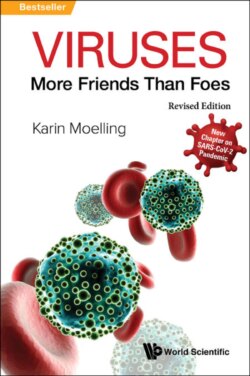Читать книгу Viruses: More Friends Than Foes (Revised Edition) - Karin Moelling - Страница 20
На сайте Литреса книга снята с продажи.
Testing
ОглавлениеThe CoV-2 pandemic has affected many people, too many! For this reason it has not been possible to make available enough tests for detection of virus infections. Several tests have been produced and, somewhat surprisingly, the one in the US from the CDC was initially unreliable. Reagents for the tests began to run short. Not everybody could be tested initially, but only suspects with early symptoms or individuals who had been in contact with infected persons within the previous two weeks. Testing is the way to learn how the pandemic evolves, how many people are infected relative to those who die or recover and how many may have antibodies and are protected.
The test in use is based on the polymerase chain reaction (PCR), which is a standard procedure in medicine in general and serves for diagnosis involving genetic sequences of viruses, other pathogens, mutations in the genome and tumors. The RNA of the virus is transcribed to DNA by the enzyme “reverse transcriptase”, known from retroviruses, leading to the name RT-PCR. A DNA fragment characteristic of the disease is selected, flanked by two sequence-specific primers, which are starting sequences for amplification of the gene fragment of interest. Then the amplification is initiated. This resembles a virus’s replication in a test-tube. A machine, a so-called thermocycler, changes the conditions from hot to cold and back. At high temperatures the duplicated DNA is melted and at low temperature each of the two fragments is copied with the help of the primers, and then the procedure is repeated. This gives an exponential growth curve — we are now all familiar with virus replication curves! The specificity of the probe needs to be verified.
This takes a few hours, but transport also takes time, so that a diagnosis can take two days or more. The machines are booked out and there was a lack of reagents.
The test can be run automatically, so that no mistakes happen there. Yet the swab-samples from the back of the throat vary, depending on the location and the course of the infection. Recently, a bigger machine has been produced in Switzerland with a higher throughput of tests. That will speed up the tests. However, the RT-PCR test proves the existence of viral RNA, but it cannot give information on whether the virus is replication-competent and infectious. Therefore, it is not known whether shopping trolleys, door handles or staircase handrails are really infectious. There is a lot of controversy about the tests. It is not clear, how many people are infected, and this number is important for calculation of the death rate, which is therefore stated as a broad range, 0.65% to 11%.
The death rate varies from one country to another and cannot be compared. What we need is fast tests, giving immediate results — then one would know who is infected and who is not. This kind of tests exist for HIV and had a significant effect on reducing viral spread. This could be used to stop travelers from entering a train or plane. Paper strips are being introduced with immobilized antibodies that can bind the viral antigens from a patient’s swab, and with a second antibody carrying a fluorescent tag, which then indicates whether the person is a virus-carrier.
